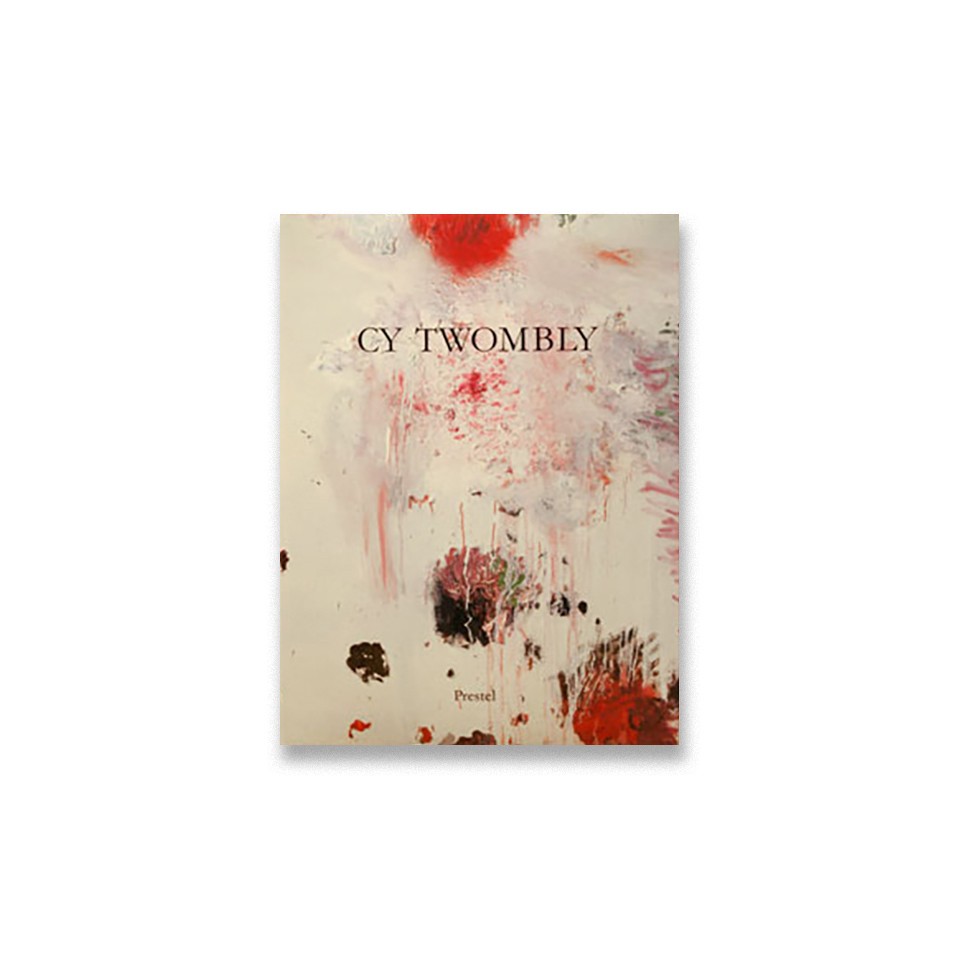Cy Twombly
Paintings, Works on Paper, Sculpture
Paintings, Works on Paper, Sculpture

This volume includes a foreword from Nicholas Serota, Harald Szeeman’s “Cy Twombly: An Appreciation,” Roberta Smith’s “The Great Mediator,” Demosthenes Davvetas’s “Cy Twombly’s ‘Zographike,’” and “Discussions of Cy Twombly,” a series of excerpts from previously published essays by Frank O’Hara, Pierre Restany, and Roland Barthes. It also includes plates, a list of illustrated works, a list of exhibitions, and a selected bibliography.
Szeeman focuses on Twombly’s “freedom,” and characterizes him as “educated and childlike, tender and violent, wistful and passionate” (9). He offers background on the artist and situates him relative to both Abstract Expressionist antecedents and contemporaries such as Jasper Johns and Robert Rauschenberg. He foregrounds the significance of Twombly’s line and of his 1957 relocation to Rome as core criteria for understanding the artist’s practice. He asserts that “[t]his work seems to us both primeval and innovative, like memory itself and its energies. Art at its best is a concentrated essence of life, imagination and dream” (12).
Smith likewise begins with Abstract Expressionism as a frame of reference and finds that Twombly “made art out of himself more openly and deeply than Barnett Newman ever imagined possible” (13). She considers the relationship between art and life for Twombly, drawing on Rauschenberg’s famous statement, and notes that Twombly, like his favorite author James Joyce, is unusual in being “quite so open about the cultural company [he] keep[s]” (15). She offers extended reflections on the interface between “word, mark and material” (17), discussing artworks such as Rape of the Sabines (1960), Night Watch (1966), and Thrysis’s Lament for Daphnis (1976).
Davvetas focuses on what he terms the artist’s “writing-language” (23), discussing the picture as “the space where the event takes place…whatever remains from an event” (23) and the figure of the child as a gloss of the “organic bond between the artist and his working material…a symbol of liveliness, logical and illogical, spontaneous and intuitive” (24).
Scholars interested in this volume may also consult other major catalogues and monographs, such as: Richard Leeman’s Cy Twombly: A Monograph (2005); Mary Jacobus’s Reading Cy Twombly: Poetry in Paint (2016); Thierry Greub’s Inscriptions (2022); Cy Twombly: A Retrospective, ed. Kirk Varnedoe (1994); Cy Twombly: Œuvres sur papier 1973–1977, Musée de Grenoble (2023); Twombly and Poussin: Arcadian Painters, ed. Nicholas Cullinan (2011); and Cy Twombly: Making Past Present, eds. Christine Kondoleon and Kate Nesin (2020).
(Publication description by Jamie Danis)
Published on the occasion of the exhibition Cy Twombly, Paintings, Works on Paper, Sculpture at the Whitechapel Art Gallery, London (September 25 – November 15).
Cy Twombly: Paintings, Works on Paper, Sculpture. Edited by Harald Szeemann. Foreword by Nicholas Serota. Texts by Pierre Restany, Roland Barthes, Demosthenes Davvetas, Roberta Smith and Harald Szeemann. Prestel-Verlag, Munich, 1987. 239 pages, fully illustrated. English and German editions.